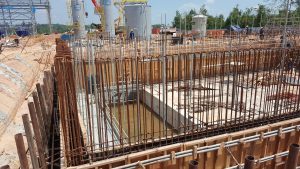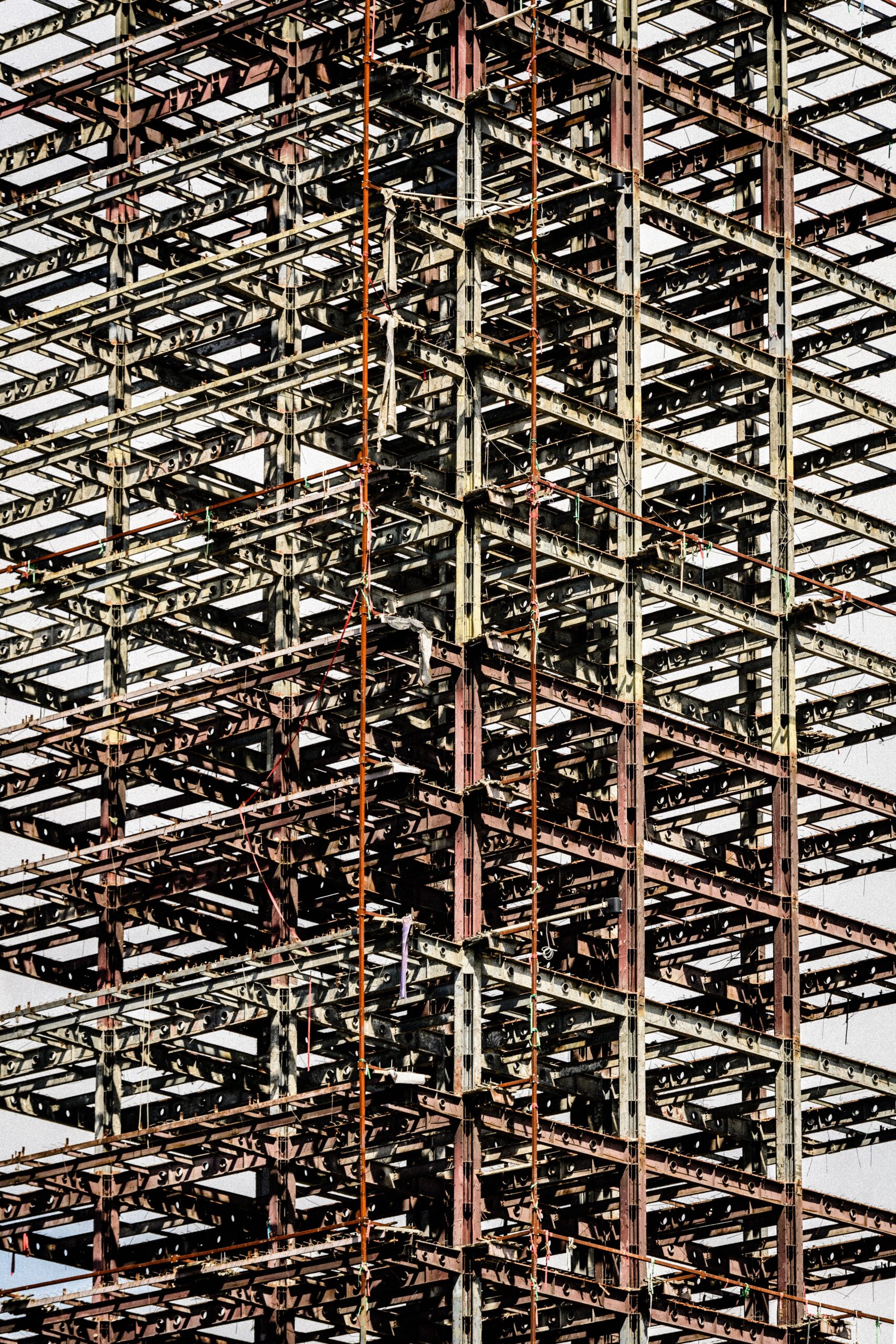Jesus Is Building “It” On Believers

In Matthew 16:13-20, Jesus asks those following Him, “Who do people say that I am?” Peter’s answer was “You are the Christ, the Son of God.”
Who do you say that He is?
Jesus tells Peter, “You are the rock on which I will build my church.”. This is the first time that “church” is used in the Bible. Too often, people think of a building when they hear the word church.
Jesus was not talking about a building when He spoke about the church. He was talking about believers. People who believe that He is the Son of God. Too many people think of church as a building.
Jesus was a liar, a lunatic, or Lord.

C. S. Lewis said in his book, Mere Christianity that…
“A man who was merely a man and said the sort of things Jesus said would not be a great moral teacher. He would either be a lunatic–on a level with the man who says he is a poached egg–or else he would be the Devil of Hell. You must make your choice. Either this man was, and is, the Son of God: or else a madman or something worse….”
Believing that Jesus is the Son of God makes you one of the foundation stones.
There is a responsibility that goes with being part of this foundation. The weight of the church rests on it. The more blocks that are in the foundation the lighter the load is on each block.
The load appears lighter to those who choose not to be a part of the foundation, in reality, the load we carry alone is much heavier. The load is lighter when it’s shared.

If we choose to be a foundation rock, we have a responsibility to the other rocks. To share the load with the other foundation stones while showing those who aren’t yet, how to be one.
We have a responsibility to be the best foundation that we can. It’s our fault if the building falls down.



 This is the 3rd in the series of answering the questions asked by the Scout group. The
This is the 3rd in the series of answering the questions asked by the Scout group. The  This will vary on each project and will depend on the customer’s needs and goals, but as a general contractor I usually provide subcontractors. As an example of varying
This will vary on each project and will depend on the customer’s needs and goals, but as a general contractor I usually provide subcontractors. As an example of varying  between projects, the owner of the project we’re currently working on is a retired electrician, so he’s doing the wiring on this project.
between projects, the owner of the project we’re currently working on is a retired electrician, so he’s doing the wiring on this project. I think the piece of equipment that I use the most often is a hammer. Some people would probably consider equipment as something motorized or powered. According to
I think the piece of equipment that I use the most often is a hammer. Some people would probably consider equipment as something motorized or powered. According to  Here we are again, manual vs. powered. I definitely “prefer” using electrical equipment or most any power tool over manual. Power tools make most tasks they’re used for easier. However, depending on the task being performed in some cases the manual tool is better suited and more productive. For example, you shouldn’t use a pneumatic nail gun as a hammer to drive a board into place.
Here we are again, manual vs. powered. I definitely “prefer” using electrical equipment or most any power tool over manual. Power tools make most tasks they’re used for easier. However, depending on the task being performed in some cases the manual tool is better suited and more productive. For example, you shouldn’t use a pneumatic nail gun as a hammer to drive a board into place. The size of the project will usually dictate how the foundation will be dug. If the project requires moving a large amount of dirt, for example a basement, then typically a large excavator (link) will be used. If it’s something
The size of the project will usually dictate how the foundation will be dug. If the project requires moving a large amount of dirt, for example a basement, then typically a large excavator (link) will be used. If it’s something smaller, we would most often use a mini excavator. (link) If the project is small enough or inaccessible to equipment then it could be dug by hand with a shovel.
smaller, we would most often use a mini excavator. (link) If the project is small enough or inaccessible to equipment then it could be dug by hand with a shovel.
 This answer depends on how we want to define “injury”. Some people would consider a splinter an injury. For this answer I’m going to define injury as something requiring medical attention, i.e. stiches, broken bones, requiring a doctor’s attention, etc. During my forty plus years in construction I have personally witnessed or actually been injured 8 – 10 times. If I take that number of times over the forty years, that’s .000137%. As dangerous as construction sites are and as much construction that’s done, surprisingly it’s not as often as one might expect. The key is working smart and safe.
This answer depends on how we want to define “injury”. Some people would consider a splinter an injury. For this answer I’m going to define injury as something requiring medical attention, i.e. stiches, broken bones, requiring a doctor’s attention, etc. During my forty plus years in construction I have personally witnessed or actually been injured 8 – 10 times. If I take that number of times over the forty years, that’s .000137%. As dangerous as construction sites are and as much construction that’s done, surprisingly it’s not as often as one might expect. The key is working smart and safe. This is one of the most interesting questions asked and easiest to answer. I can answer it with a resounding NO. This is not to say they can’t be broken, but it takes a lot to break one.
This is one of the most interesting questions asked and easiest to answer. I can answer it with a resounding NO. This is not to say they can’t be broken, but it takes a lot to break one.















 There is a lot that goes into building something. I have written about how building and operating a business can be like standing in the shadow of an overwhelming mountain and the importance of having a
There is a lot that goes into building something. I have written about how building and operating a business can be like standing in the shadow of an overwhelming mountain and the importance of having a 




 shovel. What matters is that you start shoveling and don’t quit. Failure only exists for the person who quits.
shovel. What matters is that you start shoveling and don’t quit. Failure only exists for the person who quits.

 I decided to write about this core value while reading “The Seventh Most Important Thing”, by Shelley Pearsall. In the story Mr. Hampton leaves a hand-written message for Arthur on a piece of cardboard,
I decided to write about this core value while reading “The Seventh Most Important Thing”, by Shelley Pearsall. In the story Mr. Hampton leaves a hand-written message for Arthur on a piece of cardboard,  It has been my experience when building a building that people have a dream of what they envision the finished project to look like. The problem is, they don’t know how to get that dream from their head to a physical structure. This is where vision comes in. The vision is the process of taking the imagined and turning it into reality. This provides a clear and intentional plan for building the dream.
It has been my experience when building a building that people have a dream of what they envision the finished project to look like. The problem is, they don’t know how to get that dream from their head to a physical structure. This is where vision comes in. The vision is the process of taking the imagined and turning it into reality. This provides a clear and intentional plan for building the dream.
 At an early age we begin the process of planning our lives. We have an image of how our life is going to look, what we are going to do, who is going to enjoy it with us, etc. Sometimes those plans are well thought out and designed. They come with pages and pages of blueprints including all types of details, complete with engineering calculations. Some plans are more the ‘scribbled on a piece of scrap paper idea’. Either way we have that picture of what we think our life should be.
At an early age we begin the process of planning our lives. We have an image of how our life is going to look, what we are going to do, who is going to enjoy it with us, etc. Sometimes those plans are well thought out and designed. They come with pages and pages of blueprints including all types of details, complete with engineering calculations. Some plans are more the ‘scribbled on a piece of scrap paper idea’. Either way we have that picture of what we think our life should be.
